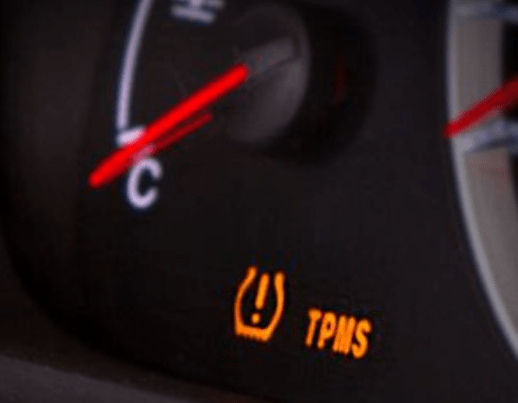The low tire pressure indicator, also known as a TPMS, should not light up on the dashboard if the tire pressure is normal.
Sometimes, unfortunately, the indicator lights up for nothing. Even when there is nothing wrong with the tire pressure. If the low tire pressure system is triggered, the corresponding icon on the dashboard will signal this and, depending on the make and model of vehicle, a message will appear.
Car manufacturers recommend that once the low tire pressure indicator appears, the driver should check the tire pressure. If you’ve verified that the tire pressure is OK and the warning light on the dashboard hasn’t gone out, here are a few ways you can try to reset the indication.

If the wheels of your car are equipped with low tire pressure sensors, when checking the tire pressure do not forget to check the spare tire, which may also have this sensor. If the low tire pressure system works without pressure sensors, the spare tire does not need to be checked.
4 ways to turn off the low tire pressure indicator (TPMS)
Drive at 80 km per hour for 15 km
Probably the easiest way is to drive about 15 kilometers at 80 km/h. Use the cruise control to maintain a constant speed. Some cars reset the pressure sensors at higher speeds than others. After driving 15-20 km at 80 km/h, stop and turn off the engine. The next time you start, the low tire pressure warning should go out.
Use your vehicle’s TPMS reset button
Every wheel of the car, regardless of the type of low pressure warning system used, has a sensor. Sometimes the sensor system just needs a reset. Consult your vehicle’s manual for details on how to reset the tire pressure monitoring system. The manual will usually tell you which button to press to reset the error.
Insert the key into the ignition and turn it to the “ON” position, but do not start the vehicle. Press and hold the reset button (sometimes located under the steering wheel) until the low pressure indicator light flashes three times. Then release the button. Start the car and let it run for 20 minutes to allow the computer to recalibrate each sensor. Turn off the ignition.
Drain and re-inflate the tires
If the reset button didn’t help, try inflating each tire to the car manufacturer’s recommended pressure plus 0.2 bar. If the icon on the dashboard does not turn off, bleed the pressure to zero.
Re-inflate all tires to the appropriate pressure listed on the driver’s door pillar or in the car’s manual. If the wheels are equipped with sensors, don’t forget the spare in that case. Then drive 3 to 5 km at 25 km/h to reset the sensors.
Disconnect and reconnect the vehicle battery
Your car has an on-board computer that checks all the sensors in the car (such as the tire pressure monitoring system sensors) and decides what to do with that information. Just like your computer at home, sometimes there can be a glitch in the electronics in the system. The quickest and easiest way to solve a computer failure is to reboot it. Unfortunately, in order to do a reboot on your car computer, you will have to first unplug it. To do this, you’ll need to briefly remove the minus (-) terminal of your car’s battery.
First, open the hood of your car, or the trunk (depending on your car model). Locate the battery and disconnect the negative cable from the battery. You will need a wrench to do this. After that, get in your car, turn on the ignition without starting the engine, and press the horn for about three seconds. This will deplete any remaining energy stored in the car’s electrical system. Next, connect the minus cable back to the battery.
If the above methods do not solve the problem

Sometimes the above methods do not help to disable the tire pressure monitoring system indicator. In this case, check the tire sensors (if any). To do this, contact your dealer or repair shop to have the sensors replaced if necessary.
The sensor may have been damaged during:
- Tire service when replacing tires
- Brake system malfunctions
- When the tires are rotated.
In addition, the air pressure sensor may not be properly calibrated, or the battery that powers the sensor is low on charge. In these cases, the sensor needs to be recalibrated or replaced. Take it to your dealer or a dealer-recommended repair shop, where they will likely fix it in a few minutes with a diagnostic tool.
Other problems
Sometimes the tire pressure light comes back on, and that indicates a bigger problem. Here’s what it can tell you:
- One of the tires may have a slow air leak
- The system may have an internal malfunction that is preventing it from functioning properly
- The wheel sensor needs to be replaced (in an indirect/indirect tire pressure control system)
In an indirect tire pressure control system, if the sensor fails, the ABS warning light also comes on. In each case, this means that the vehicle should be diagnosed at a technical center, where a mechanic can detect the problem and fix it. The service will also help you repair or replace a faulty tire pressure monitoring system component.
